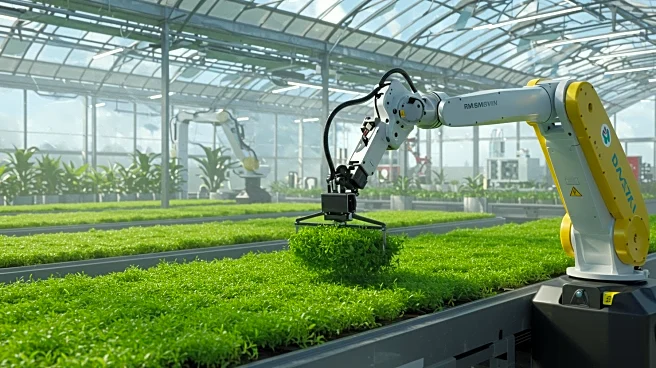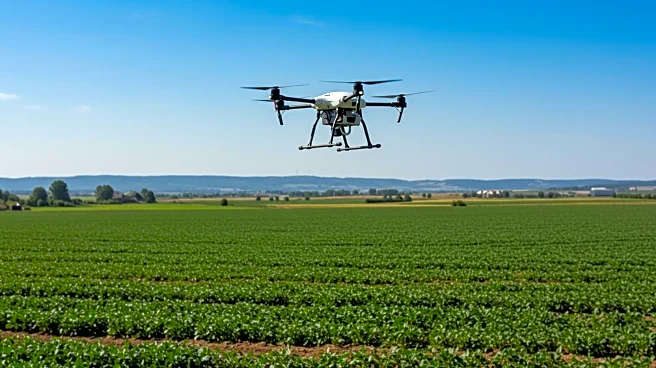Rapid Read • 8 min read
The integration of automation and robotics in agriculture is transforming the industry by addressing labor shortages and enhancing sustainability. Advanced technologies, including AI and satellite-based sensors, are enabling precision agriculture, which involves tasks such as planting, harvesting, and weeding. These innovations are crucial as global agriculture faces challenges like an aging workforce and climate change. The use of farm robots is becoming essential to meet the rising global food demand, projected to increase by 70% by 2050 according to the United Nations. These technologies allow for precise application of resources, reducing waste and environmental impact, while improving crop yields and efficiency.
AD
The adoption of automation and robotics in agriculture holds significant implications for the U.S. and global food supply chains. By improving efficiency and reducing reliance on human labor, these technologies can help mitigate the impact of labor shortages and environmental pressures. This shift is particularly important as the agricultural sector seeks to increase productivity to meet future food demands. The economic benefits are also notable, with large farms potentially seeing a rapid return on investment due to reduced operational costs and increased yields. Furthermore, the environmental benefits, such as reduced chemical use and improved soil health, align with broader sustainability goals.
As the adoption of farm automation continues to grow, the agricultural sector may see further advancements in technology and increased investment in robotics. This could lead to more widespread use of precision agriculture techniques, further enhancing productivity and sustainability. Additionally, the ongoing development of AI and machine learning could improve the capabilities of agricultural robots, making them more efficient and adaptable to various farming conditions. Stakeholders, including policymakers and industry leaders, may need to address challenges related to the high initial costs and digital access in rural areas to ensure equitable benefits from these technologies.
The integration of robotics in agriculture also raises ethical and social considerations, such as the potential displacement of traditional farming jobs and the need for workforce retraining. Additionally, the reliance on advanced technology may increase the digital divide between urban and rural areas, necessitating efforts to improve digital infrastructure and access in farming communities. The long-term impact on rural economies and the cultural aspects of farming traditions may also require careful consideration as the industry evolves.
AD
More Stories You Might Enjoy











